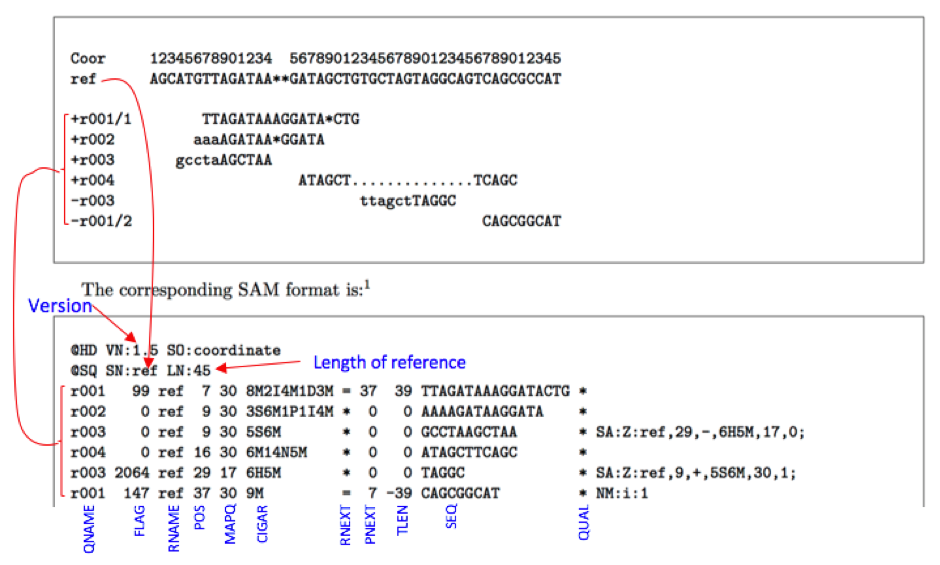

18 (r982:295) Usage: samtools Command: view SAMBAM conversion sort sort alignment file mpileup multi-way pileup depth compute the depth faidx index/extract FASTA tview text alignment viewer index index alignment idxstats BAM index stats (r595 or later) fixmate fix mate information flagstat simple SAMTOOLS - COVERAGE This application computes the depth at each position or region andproduces a histogram or table of coverage per chromosome from an input BAM file.
#BAM FILE FORMAT CODE#
#BAM FILE FORMAT FULL#
Show only ASCII characters in histogram using colon and fullstop for full and half height characters.
#BAM FILE FORMAT WINDOWS#
For example, bedtools coverage can compute the coverage of sequence alignments (file B) across 1 kilobase (arbitrary) windows (file A) tiling a genome of interest. Note: Brent Pedersen wrote mosdepth (publication here) which should be faster than samtools depth especially for large mappings (such as genome).
#BAM FILE FORMAT HOW TO#
Finally, we wrap up this chapter with a description of the program bedtools, and how to use it to investigate the depth of reads aligning to different portions of the reference genome. For more information see SAMtools documentation.

d,-min-depth INT Specifies the minimum base depth to consider a reference position to be covered, for purposes of the FRPERC and CRPERC sections. daviesrob mentioned this issue 13 days ago. You also don’t need to store the coverage into an intermediate file, thus reducing IO cost: sum=$(samtools depth "$1" | awk '' aligned. 01, meaning depths within +/- 1% of a mid point will be Samtools’s mpileup (formerly pileup) computes depth of coverage (eg. The depth command in the current version of samtools produces three tab delimited columns. 01, meaning depths within +/- 1% of a mid point will be Getting Coverage Information Per Base Coverage.Under this setting, mpileup will count low-quality bases, process all reads (by default the depth is capped at 8000), and skip the time-demanding BAQ calculation. Increased read-depth translates into higher confidence for calling genomic variants. samples thus giving coverage to all mappable reads. Samtools does have a really great, almost instant, access to any region of the.The names are CHROM, POS, and then the input file name for each depth column.

10 depth -a -d 0 -g SECONDARY,QCFAIL,DUP in. It is still accepted as an option, but ignored.

bam -plotFile example_coverage -n 1000000 -plotTitle "example_coverage" \ -outRawCounts coverage. Depth of coverage (average per-base coverage): 0. This differs from the previous functions in that a start position and length (rather than end position) are passed to the function. bam #rname startpos endpos numreads covbases coverage meandepth meanbaseq meanmapq chr1 1000000 12000000 528695 1069995 9. BAM file sorted with the samtools sort function. Benchmark files are released by 1000 Genomes Project Phase III. pl with the varFilter -D100 option, which filters out SNPs that had read depth higher than 100 (we don’t want to trust SNPs at sites with super high coverage, because they might be samtools coverage doc #1504. The first is the name of the contig or chromosome, the second is the position, and the third is the number of reads aligned at that position. txt gives coverage data for each base in the region that is in the BAM file. pl with the varFilter -D100 option, which filters out SNPs that had read depth higher than 100 (we don’t want to trust SNPs at sites with super high coverage, because they might be bam | grep "contig_youwant_to_count" | gzip > coverage The input BAM files hast to samtools coverage -r chr1:1M-12M input. Samtools depth of coverage bam -counts >.


 0 kommentar(er)
0 kommentar(er)
